- Home
- William Faulkner
The Essential Faulkner Page 3
The Essential Faulkner Read online
Page 3
Moreover, he has a brooding love for the land where he was born and reared and where, unlike other writers of his generation, he has chosen to spend his life. It is “… this land, this South, for which God has done so much, with woods for game and streams for fish and deep rich soil for seed and lush springs to sprout it and long summers to mature it and serene falls to harvest it and short mild winters for men and animals.” So far as Faulkner’s country includes the Delta, it is also (in the words of old Ike McCaslin)
… this land which man has deswamped and denuded and derivered in two generations so that white men can own plantations and commute every night to Memphis and black men own plantations and ride in jimcrow cars to Chicago and live in millionaires’ mansions on Lake Shore Drive, where white men rent farms and live like niggers and niggers crop on shares and live like animals, where cotton is planted and grows man-tall in the very cracks of the sidewalks, and usury and mortgage and bankruptcy and measureless wealth, Chinese and African and Aryan and Jew, all breed and spawn together.
Here are the two sides of Faulkner’s feeling for the South: on the one side, an admiring and possessive love; on the other, a compulsive fear lest what he loves should be destroyed by the ignorance of its native serfs and the greed of traders and absentee landlords.
No other American writer takes such delight in the weather. He speaks in various novels of “the hot still pine-winey silence of the August afternoon”; of “the moonless September dust, the trees along the road not rising soaring as trees should but squatting like huge fowl”; of “the tranquil sunset of October mazy with windless wood-smoke”; of the “slow drizzle of November rain just above the ice point”; of “those windless Mississippi December days which are a sort of Indian summer’s Indian summer”; of January and February when there is “no movement anywhere save the low constant smoke … and no sound save the chopping of axes and the lonely whistle of the daily trains.” Spring in Faulkner’s country is a hurried season, “all coming at once, pell mell and disordered, fruit and bloom and leaf, pied meadow and blossoming wood and the long fields shearing dark out of winter’s slumber, to the shearing plow.” Summer is dust-choked and blazing, and it lasts far into what should be autumn. “That’s the one trouble with this country,” he says in As I Lay Dying. “Everything, weather, all, hangs on too long. Like our rivers, our land: opaque, slow, violent; shaping and creating the life of man in its implacable and brooding image.”
And Faulkner loves these people created in the image of the land. After a second reading of his novels, you continue to be impressed by his villains, Popeye and Jason and Flem Snopes; but this time you find more space in your memory for other figures standing a little in the background yet presented by the author with quiet affection: old ladies like Miss Jenny Du Pre, with their sharp-tongued benevolence; shrewd but affable traders like Ratliff, the sewing-machine agent, and Will Varner, with his cotton gin and general store; long-suffering farm wives like Mrs. Henry Armstid (whether her name is Lula or Martha); and backwoods patriarchs like Pappy MacCullum, with his six middle-aged but unmarried sons named after the generals of Lee’s army. You remember the big plantation houses that collapse in flames as if a whole civilization were dying, but you also remember men in patched and faded but quite clean overalls sitting on the gallery—here in the North we should call it the porch—of a crossroads store that is covered with posters advertising soft drinks and patent medicines; and you remember the stories they tell while chewing tobacco until the suption is out of it (everything in their world is reduced to anecdote, and every anecdote is based on character). You remember Quentin Compson not in his despairing moments, but riding with his father behind the dogs as they quarter a sedge-grown hillside after quail; and not listening to his father’s story, but still knowing every word of it because, as he thought to himself, “You had learned, absorbed it already without the medium of speech somehow from having been born and living beside it, with it, as children will and do; so that what your father was saying did not tell you anything so much as it struck, word by word, the resonant strings of remembering.”
Faulkner’s novels have the quality of being lived, absorbed, remembered rather than merely observed. And they have what is rare in the novels of our time, a warmth of family affection, brother for brother and sister, the father for his children—a love so warm and proud that it tries to shut out the rest of the world. Compared with that affection, married love is presented as something calculating, and illicit love as a consuming fire. And because the blood relationship is central in his novels, Faulkner finds it hard to create sympathetic characters between the ages of twenty and forty. He is better with children, Negro and white, and incomparably good with older people who preserve the standards that have come down to them “out of the old time, the old days.”
In the group of novels beginning with The Wild Palms (1939), which attracted so little attention at the time of publication that they seemed to go unread, there is a quality not exactly new to Faulkner—it had appeared already in passages of Sartoris and Sanctuary—but now much stronger and no longer overshadowed by violence and horror. It is a sort of homely and sober-sided frontier humor that is seldom achieved in contemporary writing (except sometimes by Erskine Caldwell, also a Southerner). The horse-trading episodes in The Hamlet, and especially the long story of the spotted ponies from Texas, might have been inspired by the Davy Crockett almanacs. “Old Man,” the story of the convict who surmounted the greatest of the Mississippi floods, might almost be a continuation of Huckleberry Finn. It is as if some older friend of Huck’s had taken the raft and drifted on from Aunt Sally Phelps’s farm into wilder adventures, described in a wilder style, among Chinese and Cajuns and bayous crawling with alligators. In a curious way, Faulkner combines two of the principal traditions in American letters: the tradition of psychological horror, often close to symbolism, that begins with Charles Brockden Brown, our first professional novelist, and extends through Poe, Melville, Henry James (in his later stories), Stephen Crane, and Hemingway; and the other tradition of frontier humor and realism, beginning with Augustus Longstreet’s Georgia Scenes and having Mark Twain as its best example.
But the American author he most resembles is Hawthorne, for all their polar differences. They stand to each other as July to December, as heat to cold, as swamp to mountain, as the luxuriant to the meager but perfect, as planter to Puritan; and yet Hawthorne had much the same attitude toward New England that Faulkner has to the South, together with a strong sense of regional particularity. The Civil War made Hawthorne feel that “the North and the South were two distinct nations in opinions and habits, and had better not try to live under the same institutions.” In the spring of 1861 he wrote to his Bowdoin classmate Horatio Bridge, “We were never one people and never really had a country.” “New England,” he said a little later, “is quite as large a lump of earth as my heart can really take in.” But it was more than a lump of earth for him; it was a lump of history and a permanent state of consciousness. Like Faulkner in the South, he applied himself to creating its moral fables and elaborating its legends, which existed, as it were, in his solitary heart. Pacing the hillside behind his house in Concord, he listened for a voice; one might say that he lay in wait for it, passively but expectantly, like a hunter behind a rock; then, when it had spoken, he transcribed its words—more cautiously than Faulkner, it is true; with more form and less fire, but with the same essential fidelity. “I have an instinct that I had better keep quiet,” he said in a letter to his publisher. “Perhaps I shall have a new spirit of vigor if I wait quietly for it; perhaps not.” Faulkner is another author who has to wait for the spirit and the voice. He is not so much a novelist, in the usual sense of being a writer who sets out to observe actions and characters, then fits them into the framework of a story, as he is an epic or bardic poet in prose, a creator of myths that he weaves together into a legend of the South.
AFTERWORD
Except for the minor revisions I c
ouldn’t help making, that is what I wrote about Faulkner in the autumn of 1945, on the basis of the seventeen books he had published. There would be nine additional books in the subsequent years, and eight of them would belong to the Yoknapatawpha cycle. In the same years there would be a Mississippi flood of critical studies dealing with various aspects of Faulkner’s novels (most often with their symbolic elements). The question is how this introduction might change in emphasis if I were writing it today, in the light of his critical reputation and on the basis of his life’s work.
A few of the statements I made in 1945, or quoted with approval from others, would have to be revised on the ground that they do not apply to the later novels. I note, for example, André Gide’s comment on Faulkner, “There is not one of his characters who, properly speaking, has a soul”—to which my echo was, “I think he means that not one of them exercises the faculty of conscious choice between good and evil.” Though broadly true in 1945, the statement would eventually be riddled with exceptions. Temple Drake, to mention only one of these, had been a morally supine creature from the beginning to the end of Sanctuary. Twenty years later, when she reappears in Requiem for a Nun (1951), she drives herself into making an agonized confession, and she makes it “to save my soul,” which she has discovered for the first time.
Another statement contradicted by Faulkner’s later career is that he “finds it hard to create sympathetic characters between the ages of twenty and forty.” Again that is true of the early novels, but the later ones contain many characters between those ages who are meant to elicit not only sympathy but admiration. Nancy Mannigoe, for example—“a nigger dopefiend whore,” as Temple calls her—is also presented as a martyred saint. The villains forgo a little of their villainy, and one of them, Mink Snopes, becomes the real hero of The Mansion (1959). There are even happy endings of the conventional type. Lucas Beauchamp is saved from being lynched (Intruder in the Dust, 1948). Temple Drake, having found a soul, goes back to her husband and her surviving child. Gavin Stevens (in Knight’s Gambit, 1949) stops talking long enough to marry a woman to whom he had first proposed when she was a girl of sixteen.
In Faulkner’s later novels, the Yoknapatawpha story is traced backward to the founding and naming of Jefferson, as well as being carried forward almost to the present day. They might be regarded as sequels to the earlier books, yet they almost seem to be written by a different novelist. The sense of doom and outrage that brooded over the early ones has been replaced by pity for human beings, even the worst of them (“The poor sons of bitches,” Gavin Stevens says, “they do the best they can”) and by the obstinate faith expressed in the Nobel Prize address “that man will not only endure: he will prevail”—all this combined with more than a touch of old-fashioned sentiment. I respect the later Faulkner, with most of his demons exorcised, but the younger possessed and unregenerate author is the one whose works amaze us, as they never ceased to puzzle and amaze himself.
Even in an introduction confined to those earlier works, I should, if I were writing it today, adopt a somewhat different emphasis. In 1945 I was arguing against the scandalous neglect of his novels. Not only were they little read at the time but it seemed to me, as I kept saying, that hardly any critic had looked for a general design in which one novel was linked to another. So it was the design that I chiefly emphasized: the imaginative effort to understand the present in terms of the past that led Faulkner to elaborate a legend of Southern history. In so doing I shifted my attention from book to book without pausing long enough on any one of them, even The Sound and the Fury or Absalom, Absalom! and without examining each of them as a separate achievement. Fortunately that emphasis has been corrected and overcorrected by a host of later critics.
Perhaps I dwelt too much on what is in the foreground, that is, on the story of a single county in northern Mississippi presented as, in Faulkner’s words, “that chronicle which was a whole land in miniature, which multiplied and compounded was the entire South.” Faulkner in his early novels is indubitably a Southern nationalist and an heir of the Confederacy—for all his sense of guilt about the Negroes—but he is something else besides, a fact that I failed to make sufficiently clear. What he regarded as his ultimate subject is not the South or its destiny, however much they occupied his mind, but rather the human situation as revealed in Southern terms—to quote from one of his letters,5 “the same frantic steeplechase toward nothing everywhere.” He approached that steeplechase in terms of Southern material because, as he also said, “I just happen to know it, and dont have time in one life to learn another one and write at the same time.” There was of course another reason, for it was the South that aroused his apprehensions, that deeply engaged his loyalties (“I dont. I dont hate it”), and that set his imagination to work. He always dreamed, however, that his fables might stand for a universally human drama.
So I would have different points to emphasize if I were writing the introduction today. I would be able to use the cartographical studies of other critics instead of groping my way without maps—except those supplied by Faulkner himself—and stumbling more than once. It seems to me, however, that my introduction, combined with the selections in the present volume, continues to mark out the straightest path into Faulkner’s imaginary kingdom, and the surest path for those who might otherwise get lost in the swampy places. Yoknapatawpha County is a region where every landmark has a story of its own, and every story goes back to earlier times. Accordingly the selections were planned to give a general panorama of life in the county decade by decade, from the days when the first settlers came riding westward from Carolina on the Wilderness Trail or northward on the Natchez Trace. So as not to distort the sequence, I included no complete novels, but there are three stories almost of novel length: “The Bear,” “Spotted Horses,” and “Old Man.”
For this new edition I have not found it necessary to make many changes in the text. Faulkner’s later books round out the Yoknapatawpha story, but without transforming it into something else. The principal borrowings I have made from them are two of the prologues that appear in the printed version of Requiem for a Nun. One of these, “The Courthouse,” contains his most detailed account of the early settlers (and enabled me to omit a chapter from Absalom, Absalom! dealing with the same material). The other is “The Jail,” which is Faulkner’s most effective statement of how the past lives in the present: “It’s not even past.” Here as elsewhere I tried to make selections which are really (and not merely in the phrase from book jackets) “complete in themselves.” “Thus,” as I said in 1945, “the book can be dipped into as if it were a Faulkner anthology; but I also hope that some readers will go through it from beginning to end, following the characters and the sequence of events as if they were reading one continued story; and I hope they will find that it retains something of the organic unity of Faulkner’s legend.”
MALCOLM COWLEY
1 I have let this paragraph stand, with the one that follows, as an accurate picture of Faulkner’s reputation in 1945.
2 That was the tally in 1945. With one exception, all the books that Faulkner published after that year are concerned with Yoknapatawpha County. The exception is A Fable (1954), about a reincarnated Christ in the First World War. The Yoknapatawpha books, eight in number, are Intruder in the Dust (1948), about a lynching that is averted by a seventy-year-old spinster and a pair of boys; Knight’s Gambit (1949), recounting the adventures in detection of Gavin Stevens; Collected Stones of William Faulkner (1950), containing all the stories in These 13 and Doctor Martino as well as several not previously collected; Requiem for a Nun (1951), a three-act drama, with narrative prologues to each act, about the later life of Temple Drake; Big Woods (1955), a cycle of hunting stories, some of them revised from chapters of Go Down, Moses; The Town (1957), second volume in the Snopes trilogy; The Mansion (1959), concluding the trilogy; and The Reivers, published a month before Faulkner’s death on July 6, 1962. In all, sixteen of his books belong to the Yoknapatawpha
cycle, as well as half of another book (The Wild Palms) and it is hard to count how many stories.
3 The Old Frenchman place was built in the 1830s by Louis Grenier, as Faulkner tells us in the prologue to the first act of Requiem for a Nun (1951).
4 The essay by O’Donnell, “Faulkner’s Mythology,” appeared in the Kenyon Review (I, Summer 1939). It is reprinted in Hoffman and Vickery, William Faulkner: Three Decades of Criticism (Michigan State University Press, 1960).
5 The one dated “Oxford. Saturday.” (Early November, 1944.) See The Faulkner-Cowley File, pp. 14–17.
1
THE OLD PEOPLE
Editor’s Note
Here are four of Faulkner’s stories dealing with early days in Yoknapatawpha County: with the Indians, the first white settlers, and the McCaslin plantation in the time of Uncle Buck and Uncle Buddy.
The Indians in Faulkner’s country were Chickasaws. He paints them as being slow, brooding, cruel, serene, like the land itself, to which they belonged as much as did the wild creatures they hunted. The settlers disturbed this natural relationship. They found it easy to buy the Chickasaws’ land—even to cheat them out of a hundred square miles in one transaction, as did Thomas Sutpen—because the Indians were psychologically unable to place a cash value on it. Then, having driven the natives westward and having peopled the land with slaves—to grow more cotton to buy more Negroes to grow more cotton—the planters set about creating their own aristocratic order.

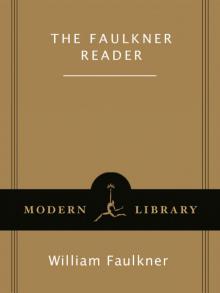 Faulkner Reader
Faulkner Reader Collected Stories
Collected Stories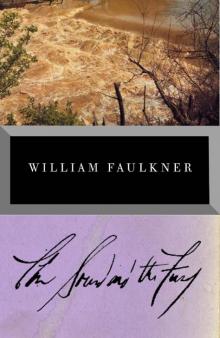 The Sound and the Fury
The Sound and the Fury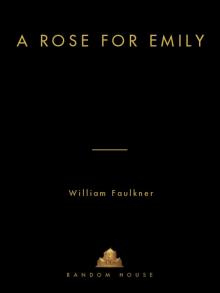 A Rose for Emily and Other Stories
A Rose for Emily and Other Stories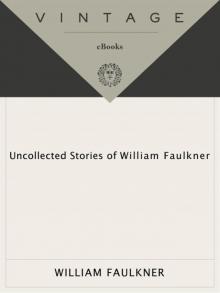 Uncollected Stories of William Faulkner
Uncollected Stories of William Faulkner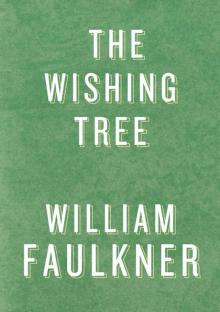 The Wishing Tree
The Wishing Tree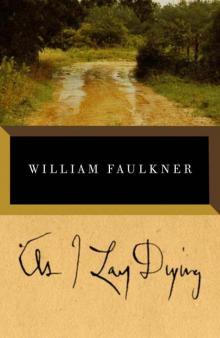 As I Lay Dying
As I Lay Dying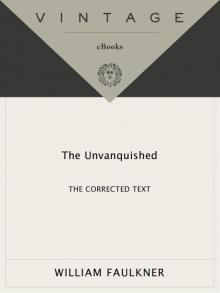 The Unvanquished
The Unvanquished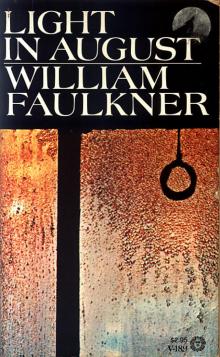 Light in August
Light in August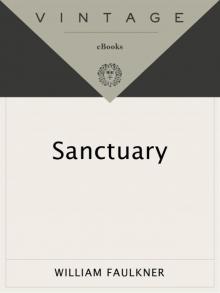 Sanctuary
Sanctuary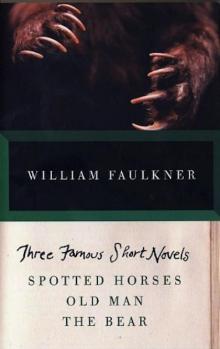 Three Famous Short Novels: Spotted Horses Old Man The Bear (Vintage)
Three Famous Short Novels: Spotted Horses Old Man The Bear (Vintage)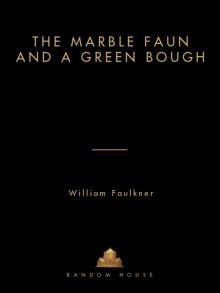 The Marble Faun and a Green Bough
The Marble Faun and a Green Bough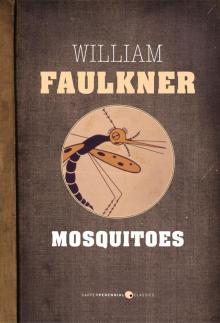 Mosquitoes
Mosquitoes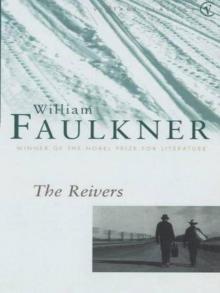 The Reivers
The Reivers Father Abraham
Father Abraham![The Wild Palms: [If I Forget Thee, Jerusalem] Read online](http://i1.bookreadfree.com/01/the_wild_palms_[if_i_forget_thee_jerusalem]_preview.jpg) The Wild Palms: [If I Forget Thee, Jerusalem]
The Wild Palms: [If I Forget Thee, Jerusalem]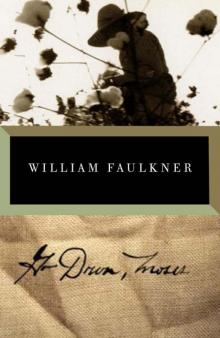 Go Down, Moses
Go Down, Moses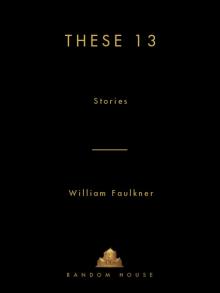 These 13 (1931)
These 13 (1931)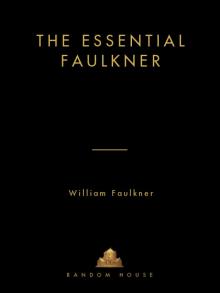 The Essential Faulkner
The Essential Faulkner Snopes: The Hamlet, the Town, the Mansion
Snopes: The Hamlet, the Town, the Mansion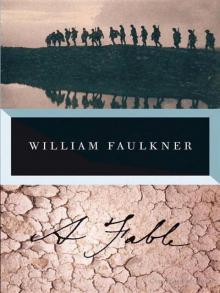 A Fable
A Fable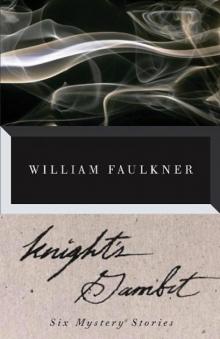 Knight's Gambit
Knight's Gambit Requiem for a Nun
Requiem for a Nun Essays, Speeches & Public Letters
Essays, Speeches & Public Letters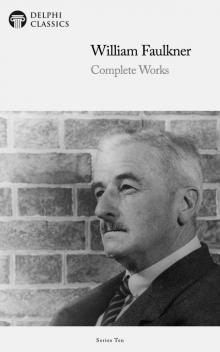 Complete Works of William Faulkner
Complete Works of William Faulkner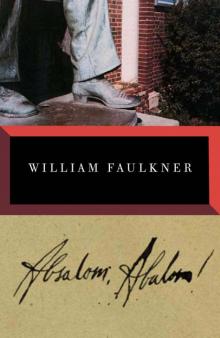 Absalom, Absalom!
Absalom, Absalom!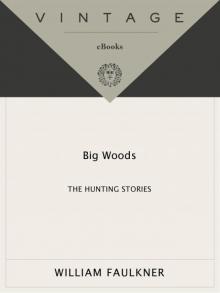 Big Woods: The Hunting Stories
Big Woods: The Hunting Stories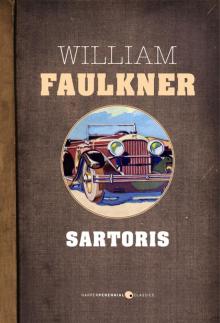 Sartoris
Sartoris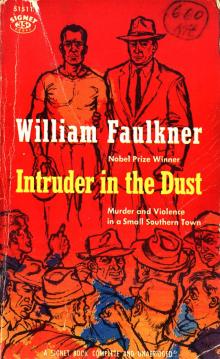 Intruder in the Dust
Intruder in the Dust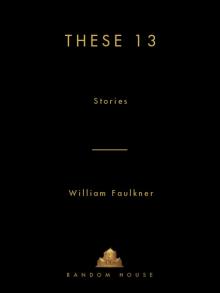 These 13
These 13 Knight's Gambit (Vintage)
Knight's Gambit (Vintage)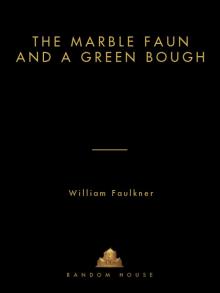 Marble Faun & Green Bough
Marble Faun & Green Bough Unvanquished
Unvanquished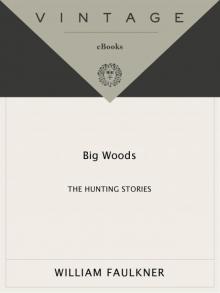 Big Woods
Big Woods